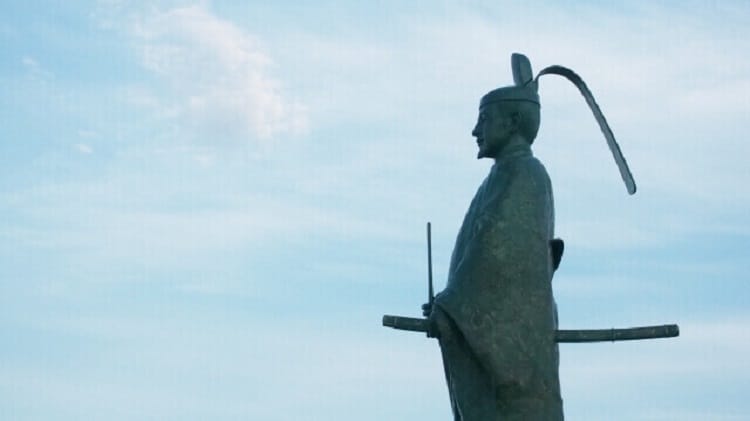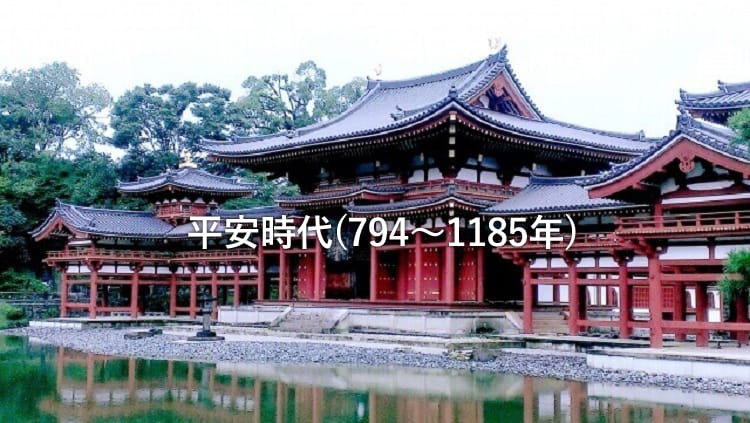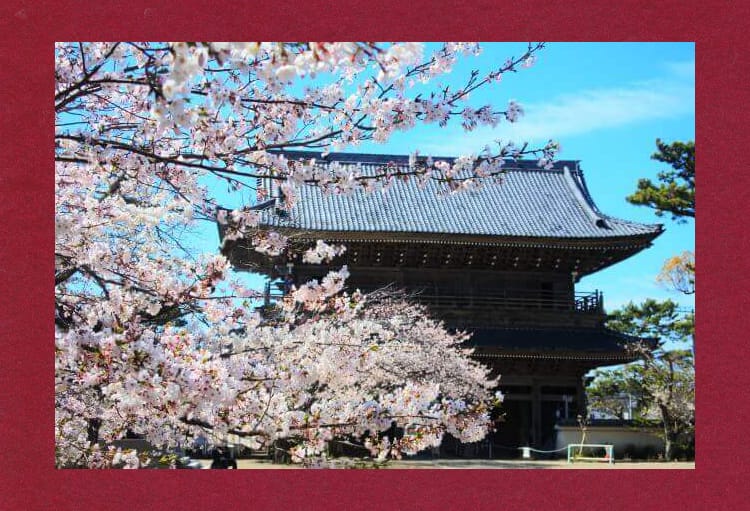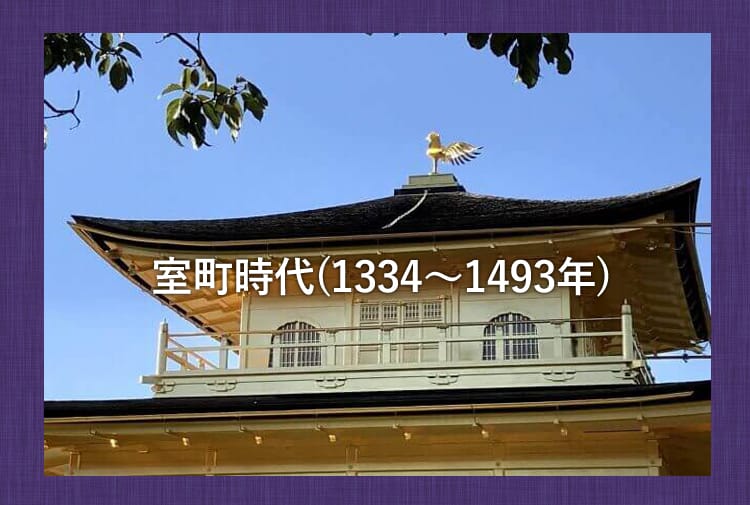
Heian period (794-1185 years)

~ Sake brewing in the Heian period as seen in "Enki Shiki" ~
In 794, Emperor Kanmu moved to Heiankyo, Kyoto. It is the beginning of the Heian period.
At that time, there was a national project to summarize in detail the ceremonies, events, systems and laws that were performed throughout the palace. So, in the early Heian period (from 905 to 927), it was compiled over 20 years,“Yenki ceremony”It is a book called.
There are many people who have learned about Japanese titles in junior high school and high school and are familiar with the title.
“Yenki-style” is a large book consisting of all 50 volumes, but almost all of the volume is transmitted without dissipating, making it an extremely valuable historical source for understanding ancient politics.
The details of sake brewing at the then imperial court are described in "Sake Brewer", one of the items in this book.. For example, you can learn how to prepare sake with rice, rice cake, and water, the contents about rice cake, and various kinds of sake that are 10.
The most important of these is"Sake" brewed by the brewing method called "Shiori"is. This method was also mentioned when Susanono Mikoto introduced the story that “Yashio no Sake” was prepared to defeat the snake Yamatanorochi who eats humans.
Bookmark is a method of repeating the process of filtering the koji once fermented once, adding steamed rice and rice koji to this, fermenting again and filtering.So you can make sweet liquor with high alcohol content.
This bookmarkWhat will become the prototype of the current `` Kijoshu ''.Kijo Sake is a sake made by adding part of Japanese sake instead of brewing water, and is characterized by a sweet, rich and rich taste.
“Kijoshu” was born in 1973. Compared to `` precious wine '' called the wine emperor (a high-class wine characterized by rich sweetness and superb flavor, made with a special `` precious cocoon '' made by attaching precocious fungi to ripe persimmons) As a high-class sake with a taste, it was named Kijo Sake.
-Development of "monk sake" made in temples-
Until the beginning of the Heian period, sake brewing was performed mainly by the brewing brewer who was the government office of the Imperial Court. Brewed, and brewing technology shifted to the private sector.
ThenThe main temples for sake brewing were large temples throughout Japan.. Collectively the sake made at this temple`` Munbo Sake ''called.
The quality of this monk liquor was great and received a very high reputation. In this way, the large temples in each region gained a strong source of funds through the monk's sake, and became a powerful force.
Among the many priests, the most famous one isAmano Sake (Amano Sake) built at Amano Kongo-ji Temple in Kawachinagano City, Osaka, Japan.
The name of the monk liquor is now only left in the literature, but in fact, there are still some sake breweries that have succeeded in brewing the monk liquor and making sake.
That is, Saijo Joint Stock Company in Kawachinagano City, Osaka Prefectureis. In 1971 (Showa 46), with the favor of Amanosan Kongo-ji and the support of locals,Successful rebirth of the legendary Amano SakeI was allowed to.
Amano Sake is a sake that Dazai and Toyotomi Hideyoshi loved so well, and that famous “Sakai Hanami” (Toyoshito Hideyoshi planted 700 cherry blossoms in Ulsan and invited 1,300 customers. It is said that it was brought in at the time of a large banquet. It is dark blue and has a very sweet taste.
Even so, it's surprising that a monk who should have the rule that you shouldn't drink sake was making sake.
Actually, in contrast to these prestige, the monks also secretly drank sake.. Of course, I avoided the direct word “alcohol” and instead used the slogan “Hannawato”.
By the way, this “Hanwaku” means “wisdom that leads to enlightenment”. Even though it feels unreasonable, even the monks who trained their spirits through strict training did not resist the deliciousness of sake. I feel a little familiar.
Speaking of the sake made by monks, if you like wine, you might recall Burgundy wine.
Wine made in Burgundy, located in northeastern France, is one of the oldest wines in the world.
It is a famous place in France that boasts the Chablis district, which is synonymous with dry white wine, and the Beaujolais district.
It was Christian monks who laid the cornerstone of this Burgundy wine. He cleared a rocky wasteland, selected the appropriate grape varieties, and made fine wines.
About 1,000 years ago, they already knew that there was a difference in the taste of the wine due to differences in soil and climate, and began to divide the field into sections called “Klima”. This chestnut is registered as a UNESCO World Heritage Site in 2015.
-Moroji and Kata-white construction-
It was around this time that sake was born as a prototype of modern Japanese sake. that is,"Nanto Morohaku" developed by a temple in Nara.
`` Moroji '' is a method of making sake by polishing white rice (rice used to make rice bran) and kake rice (rice that is cooled and steamed and directly fed into mash)is. It is called because “white” rice is used for “various” (= both).
Morohaku is close to modern sake,It is a clear and unobtrusive liquor, and at that time a very valuable luxury productwas. In this period, rice milling technology was not developed yet, and the production volume was limited, so only privileged classes such as influential aristocrats could actually speak.
For "Moraku"`` Katahaku '' is the use of brown rice that is not whitened for sticky rice, and rice that is whitened only for rice.Is called. This name was given because "white" rice was used only for "one".
This is not sake,Nigari liquor that was mainstream at the timeis. It was not until a long time ago that ordinary people began to enjoy sake.
■ Kamakura period (1185-1333 years)

The rise of brewing liquor stores
As we enter the Kamakura period, urbanization will progress and commerce will flourish. It was during this period that the transition from bartering to a money economy.
そ し て,The liquor business by the imperial court was shrinking more and more, and at this time, not only temples but the general people were actively making sake.. So-called“Sake Brewery”The rise of
The penetration of the monetary economy further encouraged customers to sell their own liquor as products and buy them.
The center of the brewing industry was京都.Kyoto's “Yanagi” and “Ume” are still on record as major liquor stores.. However, even if it was a major company, the production volume was never large.
According to records, even a major brewery,To the extent that cocoons of 2 stones (360 liters) to 3 stones (540 liters) were arranged in the soilIt seems that it was. The mass production is possible in the future.
~ Activation of prohibition order ~
The fact that brewers have risen and the volume of liquor has increased is a welcome thing.
Until then, people could drink alcohol only on `` Hare Day '' (day with special events such as ceremonial occasions) but also on `` Ke Day '' (ordinary days without special events) Because it became possible.
However, it wasn't just a good thing. One of them isThe fall of samurai.
Some people have drunk too much to work, and at the end of the day some people have been killed by drunk momentum. The samurai has a sword, so it's a horrible thing. Deep drinking with a weapon is as dangerous as drunk driving.
Like thisThe Kamakura Shogunate, who boiled down the repeated folly of samurai, promulgated a ban on alcohol in 1252.`` Prohibition of sake '' (Koshunokin)It is called.
Sake is buying and selling liquorMeans That meansA law that does not completely prohibit drinking, but prohibits the buying and selling of alcohol.
This limits the amount of liquor you can make to what you need to drink at your home. Specifically, only one turtle for storage and brewing can be made per house.
The sake was originally made, so all but the rest was destroyed. The destruction was done thoroughly, and it is said that more than 3 million 7000 bags were destroyed in Kamakura City alone.
The capacity of the cocoon isIt is estimated that it was roughly 2 升 (3.6 liters) to 4 升 (7.2 liters)So it ’s an amazing amount. Due to the prohibition of sake, the brewing industry was damaged greatly.
It seems that there are still a lot of broken pieces of coral that can be seen around Yuigahama in Kamakura. If you are interested, why not visit.
It seems to be quite interesting to taste Japanese sake, thinking of the regrets of the predecessors who have been confiscated. In that case, of course, driving is strictly prohibited. Let's go on Enoden.
Muromachi period (1334-1493 years)

-A revolution, sake brewing is booming again-
In 1334, Takashi Ashikaga opened a new shogunate in Kyoto. The birth of the Muromachi Shogunate. In this era, the policy on liquor was changed by 180 degrees.
The Shogunate began to encourage them to make and sell liquor.. The shogunate, who determined that brewers can be a powerful source of finance,We decided to give liquor stores a privileged position and give them strong protection.It is
In return, from a liquor store"As a liquor store"I started to collect taxes named. The amount is 1 sentences for 200 sake lees. This tax revenue became an extremely important source of funds for the shogunate.
Due to these promotion measures by the shogunate, sake breweries developed greatly in Kyoto. In the historical materials that recorded the list of brewers,Around 1425, there is a record that “Tanaka Nakagai no Sake Restaurant” had reached 342 hotels..
Some of them made 300 stone liquor.300 stones are 54,000 liters. It is the amount equivalent to 30,000 books in one bottle. You can see how the brewery scaled up and developed.
By the way, the ruins of a large-scale brewery at that time were found in a place north of 1 kilometers in Kyoto Station, and the excavation survey results were released in 2005 (Heisei 17).
According to the report, this markNorth-south 16 meter x east-west 14 meteris. From there, I found more than 60 base holes (diameter 40 centimeters, depth 200 centimeters) in which the pots used for sake brewing were installed.
There are places where the bottom of the jar remains, and from its shape and size, the heel is estimated to have a height of 80 centimeters and a diameter of around the trunk of 80 centimeters. In addition, a well trace was found nearby.
-Great progress in brewing liquor stores-
theseSake breweries gained capital under the protection of the shogunate, and many of them gradually expanded their hands to a financial business named Doso.. Those that serve as both a brewer and a financial company"Tsuchikura liquor store"called.
The “Takukura role (collection role)” collected from Tsuchikura, along with the “Liquor role” mentioned above, became an influential resource for the shogunate.
In addition, Sake breweries have also expanded into the brewing industry. At that time, Tsukudori was undertaken by Scorpio, formed by the gods of Kitanosha (Kitano Tenmangu) during the Heian period.
From the beginning of the 15 century, Scorpio had monopolized the right to manufacture and sell cocoons against the backdrop of the shogunate's authority. It seems to have set a high price for the bag, which is good to have exclusive rights.
This monopoly is a big deal, and there is a record that the brewery, which produced and sold coffee without permission, destroyed the manufacturing site in front of the shogunate officials.
However, as the power of the shogunate gradually declined from the middle of the 15 century,Temples such as Enryakuji and breweries that challenge the monopoly status of Scorpio are becoming more confronted with the shogunate and Scorpio.
Against this background, the shogunate was in the year of 1444.Abolished Kitanosha's exclusive rightsDid. Then, Scorpio stands up in the company and starts a fight, but the shogunate thoroughly suppresses this movement.
This event"Bunan's uproar"It was called, and the Kitanosha area burned up, and it became a big incident with a great sacrifice of 40 deaths. ThusThe monopoly rights of Scorpio collapsed, and the subsequent brewing began to take place in the brewing industry..
-Establishing the original sake brewing prototype-
In the Muromachi period, the current Sake brewing prototype was almost complete.
It is the first existing Japanese brewing technique book written in the early Muromachi period.`` Diary of sake '' (Goshi no Nikki)Describes the application of lactic acid bacteria fermentation and filtration with charcoal.
About these techniques, it is said that they are out of the office, and at the beginning of the book, it is written “Nohokuden (well-known), confidential”, “secret”. It was a very advanced and precious technology because it imposed a thorough confidentiality obligation on the succeeding engineers.
It is also a diary written by monks at Kofukuji Temple in NaraTamonin Diary (Tamoninnikki)Also describes in detail the sake brewing of this period.
Describes many of the methods used in today's sake brewing, such as today's “three-stage preparation”, as well as modern white sake brewing such as morohaku making, burning, and lactic acid bacteria fermentation.The high level of brewing technology at that time can be seen.
In particular, the article on burning is amazing.Fire-filling means sterilizing sake at low temperatures.Say. Indirect heat for about 60 with hot water of about 65 to 30 ℃.
As a result, the enzymes remaining in the liquor can be stopped and bacteria that impair the aroma and taste of the liquor can be killed.
About this pasteurization method, French bacteriologist Pasteur is said to have "discovered", and after the name of the discoverer, pasteurization is called pasteurization. This pasteurization method is still used for milk.
Pasteur made this discovery in 1865. However, the “Timonin Diary” was written during the Muromachi period.The book demonstrates that the same method was already done in Japan hundreds of years before the discovery of Pasteur..
I am surprised that, despite my lack of knowledge of chemistry, I had such an extremely advanced microbe control technology.
Thanks to the unremitting efforts and ingenuity of our predecessors, we have been able to drink delicious sake like today. I cannot forgive respect and gratitude. That ’s really appreciated.
By the way, in this “Tamonin Diary”You can also see a description that a preparation bowl that contains 10 stones (1,800 liters) was developed in Nara, and you can see that mass production of alcohol became possible in this era. During the Muromachi period, both public and samurai families had a spree.
It seems that consumption of liquor was much higher than that of the Kamakura period, but this is also due to the progress in brewing technology and the ability to produce high-quality liquor in large quantities.
